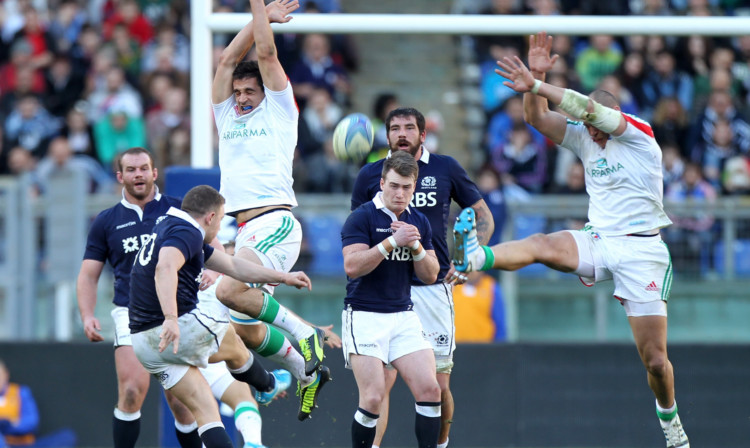
Well, it certainly wasn’t pretty, but Scotland won their first match of this year’s Six Nations!
It was an incredibly scrappy affair and it has offered a stay of execution to coach Scott Johnson.
As a game, it was more a procession of errors punctuated by some rugby rather than a great spectacle. But few Scottish fans in Rome will have cared!
After all, for a while it looked as though it was going to be Italy’s afternoon until Duncan Weir struck that sweet drop goal to seal victory.
Scotland were by no means convincing. At times their concentration was poor they fell off tackles and their defensive line was woefully slow to get up and in the faces of the Italian ball carriers.
Again, as they did against Ireland, they allowed Italy to score a soft try just before half-time. Even when they scored a second well-worked try of their own, they conceded another minutes afterwards.
The failings of old were there for everyone to see but unlike a fortnight ago, they fought hard to get themselves into a position to deservedly win the game.
Whatever was said at half-time seemed to galvanise Scotland into action. But it’s frustrating it takes 40 minutes of rugby before they figure out what they need to do to win.
It was crying out for some percentage rugby, putting pressure on Italy to play.
Duncan Weir began to kick to the corners which forced the Italians to play from deep inside their own half.
Scotland defenders started to attack the Italian ball-carriers with some urgency which forced them to concede turnovers and make mistakes.
Simple stuff, but when executed well, highly effective.
What’s more, the Scottish line-out dominated for once. Sadly, the scrum was still a disaster area, at least until the starting Italian front row was substituted.
There’s no doubt there are still problems and this win doesn’t transform Scotland’s season, nor address the fundamental issues within the game both on and off the field.
But the players deserve to celebrate this victory because it was full of character.
Perhaps it might just be a turning point.

Enjoy the convenience of having The Sunday Post delivered as a digital ePaper straight to your smartphone, tablet or computer.
Subscribe for only £5.49 a month and enjoy all the benefits of the printed paper as a digital replica.
Subscribe